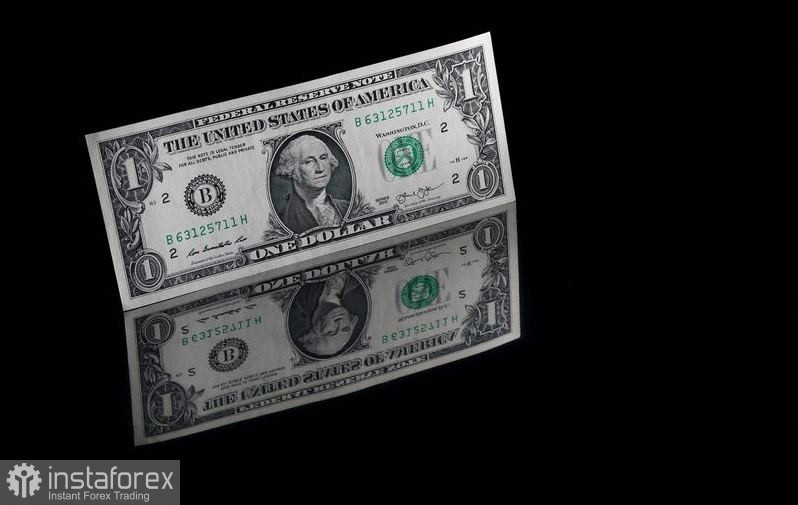The euro-dollar pair continues to work out the levels in good faith, fluctuating in the price echelon of 1.1250-1.1360. However, this range is gradually narrowing due to the decline in market activity. The closer it gets to the weekend, the weaker the volatility. On Friday, the world celebrates Christmas Eve, on weekends – Christmas itself, and on Monday-Tuesday – Boxing Day. Many trading platforms in the world will be closed both on the last trading day of the current week and on the first days of the next week.
Traders of EUR/USD "keep themselves within the bounds of decency," not leaving the price range set last week. Market participants do not risk playing either against the dollar or in its favor. As soon as the pair approaches the upper border of the above range, buyers take profits and pass the baton to sellers, who, in turn, try to drag the price into the 12th figure area. Such ping-pong is typical for such trading periods when the market is in a "standby" mode.

The last block of important macroeconomic statistics of this year was published on Thursday. Separate releases are expected next week, but the final chord for the EUR/USD pair was announced Thursday.
First of all, we learned the dynamics of the most preferred indicator of inflation by the Fed - the personal consumption expenditure index (PCE). For several months now, it has significantly exceeded the target level of the U.S. regulator. It is believed that this indicator is monitored by members of the Fed "with particular bias."
The core PCE index, which does not take into account volatile food and energy prices, jumped in November to the level of 4.7% (in annual terms). This is the strongest growth rate since 1989. At the same time, the October result was revised upward (from 4.1% to 4.2%). In September, August, July, and June, the indicator came out in the area of 3.6-3.7%.
Thursday's data was a logical addition to another inflationary report that reflected a record rise in the consumer price index. Let me remind you that the CPI is similarly at the level of multi-year highs. According to the latest published data, the general index accelerated to 6.8% YoY in November. This is the maximum value of the indicator over the past 39 years. The last time this indicator was at this level was in 1982.
In other words, inflation indicators continue to delight dollar bulls with record growth rates. True, the dollar bulls themselves are quite modest in showing emotions. Paired with the euro, the dollar strengthened by only a few dozen points. The EUR/USD pair bounced off the intraday high of 1.1342 and touched down at 1.1290. This was the end of the holiday: the downside impulse faded away.
Recall that the "thin" market is very capricious, and these whims can be expressed not only in the form of abnormal volatility but also vice versa - in the form of abnormal phlegmatic. Indeed, Thursday's data is of the utmost importance for the Fed, and therefore for the dollar pairs. Therefore, such a weak reaction of traders can be attributed only to the peculiarity of the pre-holiday period.
Nevertheless, the data itself should not be ignored – it is a "time bomb" that will surely remind you of itself. One of the key inflation barometers has once again demonstrated record growth, thereby confirming the correctness of the course taken by the Fed to tighten monetary policy parameters.
Recently, some experts have begun to focus their attention on Powell's restrained position, who initiated the early withdrawal of QE, but did not promise to raise rates at a "sports pace." Against the background of these doubts, the greenback calmed down its ardor and got stuck in a pair with the euro in the swamp of a wide-range flat, which begins to narrow closer to the holidays. But if we talk about the long-term prospects for the dollar, they look very promising. On Thursday, the greenback received a rather important trump card, which will remind you of itself at the beginning of next year.
And a few more words about Thursday's reports. During the American session, the growth rate of initial claims for unemployment benefits was published. Since mid-November, this indicator has been at the pre-crisis level, fluctuating in the range of 195,000–230,000. This week it came out at the 205,000 mark, which is slightly higher than the forecast level (200,000). For comparison, we can recall that in September this indicator did not fall below the target of 320,000.
The volume of orders for durable goods also came out in the "green zone." The total volume of orders increased in November by 2.5% (with the forecast of growth up to 1.9%) and excluding transport - by 0.8% (with the forecast of growth up to 0.6%).
Thus, this year's latest most important macroeconomic reports were on the side of the greenback. In the long term, all these releases will still show themselves – for example, on the eve of the January Fed meeting. Well, at the moment, the market is showing phlegmatic pre-holiday, continuing to trade within the range of 1.1250-1.1360, alternately pushing off from its borders.
 English
English 
 Русский
Русский Bahasa Indonesia
Bahasa Indonesia Bahasa Malay
Bahasa Malay ไทย
ไทย Español
Español Deutsch
Deutsch Български
Български Français
Français Tiếng Việt
Tiếng Việt 中文
中文 বাংলা
বাংলা हिन्दी
हिन्दी Čeština
Čeština Українська
Українська Română
Română

